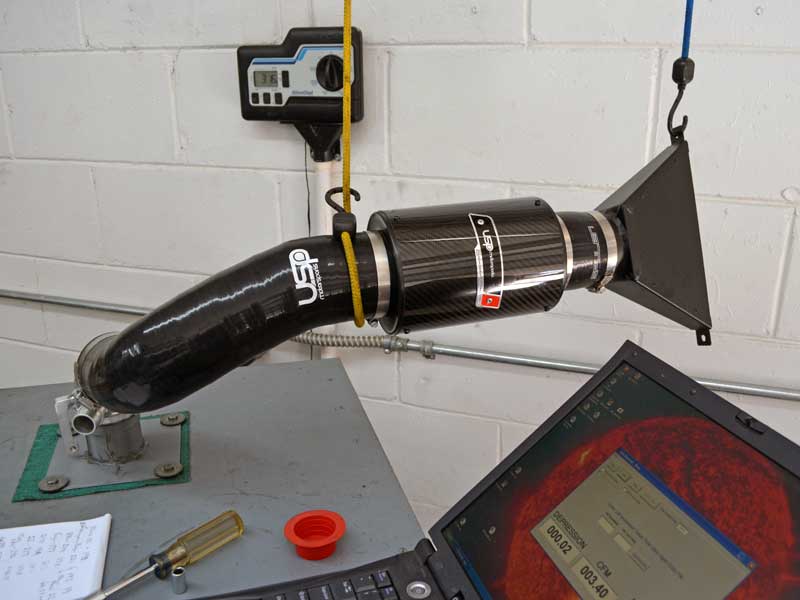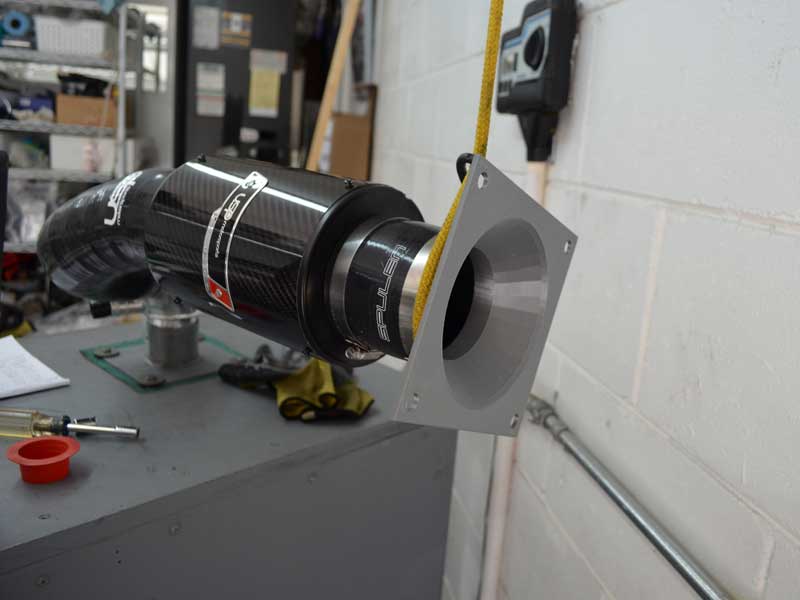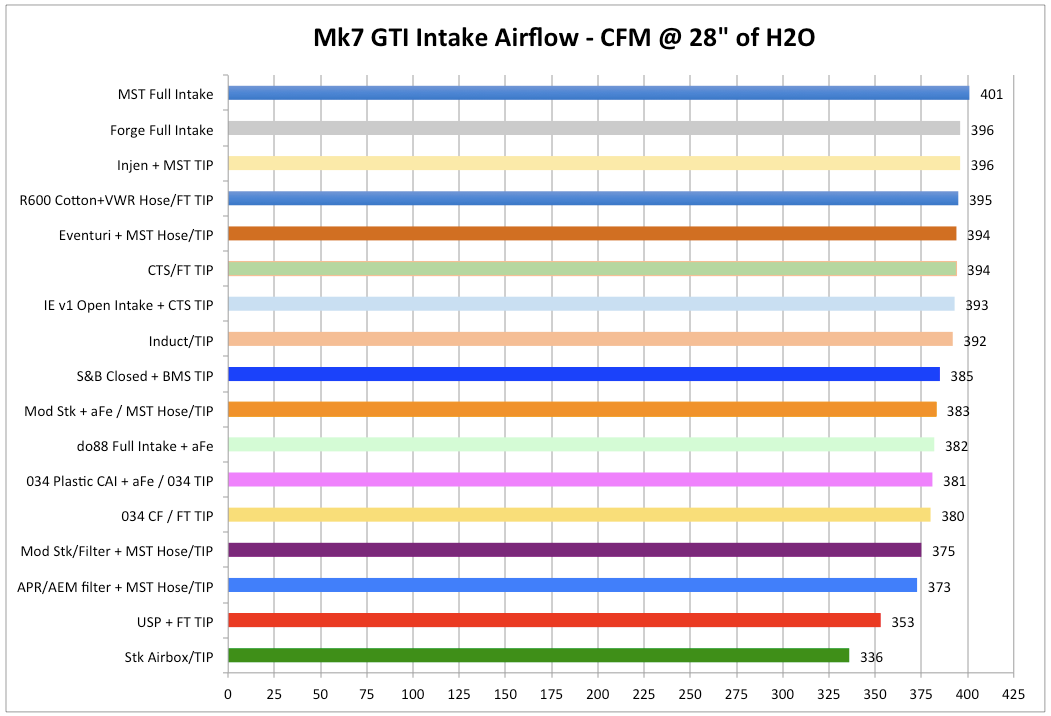Background:
In response to a request to flow test the USP Motorsport tear duct intake I contacted USP to inquire about the possibility of borrowing one for a flow test. USP declined to cooperate, they did suggest I could buy the intake if I wanted to test it, so I looked for other options. Fortunately I was able to locate an owner with one nearby and was able to use it for this test.

The Test:
The USP intake is attached to the flow bench using the supplied USP parts with the addition of a generic style inlet elbow that attaches to an adapter that simulates the compressor housing inlet of an IS20/IS38 turbocharger.

The airflow through the intake is measured at a depression of 28″ of H2O.
The Results:
The USP intake flows 353 CFM @ 28″ of H20.
This result along with the airflow readings from a number of other intake options are shown on the chart:
Conclusion:
The USP Tear-Duct intake for the Mk7 GTI flows 353 CFM @ 28″ of H2O which is approximately 5% more than the GTI stock intake.
Ranked against other GTI intake options the USP intake is in the bottom 25% based on airflow measured.

Experiment:
Curious to see if a different shaped inlet would change the airflow through the USP intake the metal inlet was removed and replaced with a round funnel inlet.
Note: The funnel inlet is normally used for attaching parts to the flow bench and drawing air through in the opposite direction of this experiment. I had mild curiosity to see what would result from this change but wasn’t interested in spending time making an inlet.

With the modified inlet the USP intake flowed 362 CFM, almost 8% greater than the stock GTI intake.
USP versus APR
The USP intake (353 CFM) is likely to be compared with the similarly performing APR intake (348 CFM). In consideration of that it’s worth noting that all flow testing with the APR intake was done using the APR turbo inlet elbow.
The USP intake does not come with an inlet elbow and therefore I chose a well performing generic inlet elbow to connect to the USP intake. The generic inlet elbow attached to the USP intake has been measured to flow 18 CFM more than the APR turbo inlet elbow.
If the APR intake system were flow tested using a higher flowing inlet elbow it would likely flow equal to or slightly better than the USP intake.
Update: The APR intake was retested with an MST inlet elbow and performed better.


kinda upsetting that they didn’t jump on the offer to have their intake validated and tested… not a very good play for the community.. Minus points for USP….
Too bad this test is irrelevant when a cold air intake is being compared to an open element. This bench test will provide more favorable results to an open intake since it’s atmospheric flow versus the forced air coming from the ram on a cold air intake.
The test is to determine pressure drop through the intake. Regardless of the source of air movement through the intake, flow bench or “ram air”, the amount of resistance the intake presents the airflow is the same. Positive pressure at an intake inlet should be evaluated separately. If there’s a strong ram air effect that could be beneficial, but that’s a different aspect of performance from the pressure drop caused by the intake. I have investigated the ram air effect and found a pressure increase at the intake inlet, it is fairly small compared to the vacuum generated by the turbo compressor.
http://mygolfmk7.com/2020/02/ram-air-results/
I’m curious about the AMS intake and would be happy to buy if you’d run the test. Please reach out so we can coordinate!
hey Jeff. Regarding the overall test results for the best intake system. At top of the list there is the MST Full intake.
Can you confirm you used the version that uses the largest TIP (the one made for the hybrid turbo).
If so, did you run the test using their regular version of the TIP (the one made for is12-is20-is38)?
What results did you get on the bench with it in CFM?
And the results you got with the VWR R600+MST filter/hose/TIP are close of the top.
Did you use the regular MST TIP or the V2 for hybrid turbo?
Thanks
I did use the MST TIP for the hybrid turbo with the MST Intake System. MST provided me with both versions of the inlet elbow and the results depended on what size inlet adapter was used. The link to that test is below. I’ve used the hybrid MST TIP for all tests involving an MST TIP since receiving the V2 product.
http://mygolfmk7.com/2019/07/mst-performance-intake-analysis/
You can take any inlet elbow and grind/bore out the turbo inlet side and also ram air cold air style intakes perform a lot better in real world driving
I’m interested in seeing the results that others have recorded with their GTI. Would you be able to provide a link to the test results you are referencing?